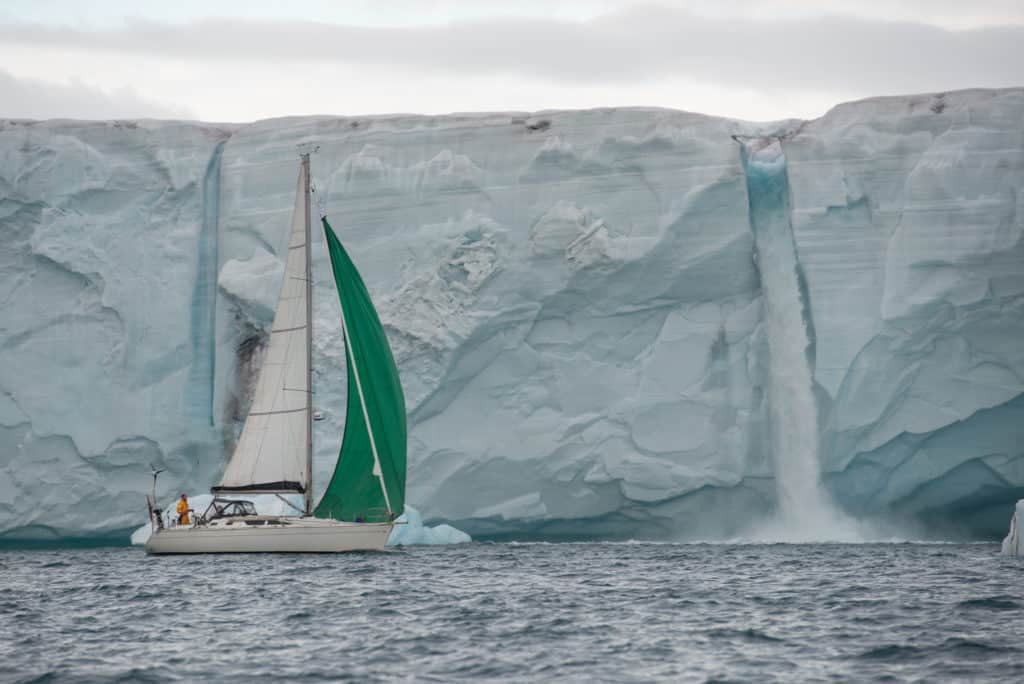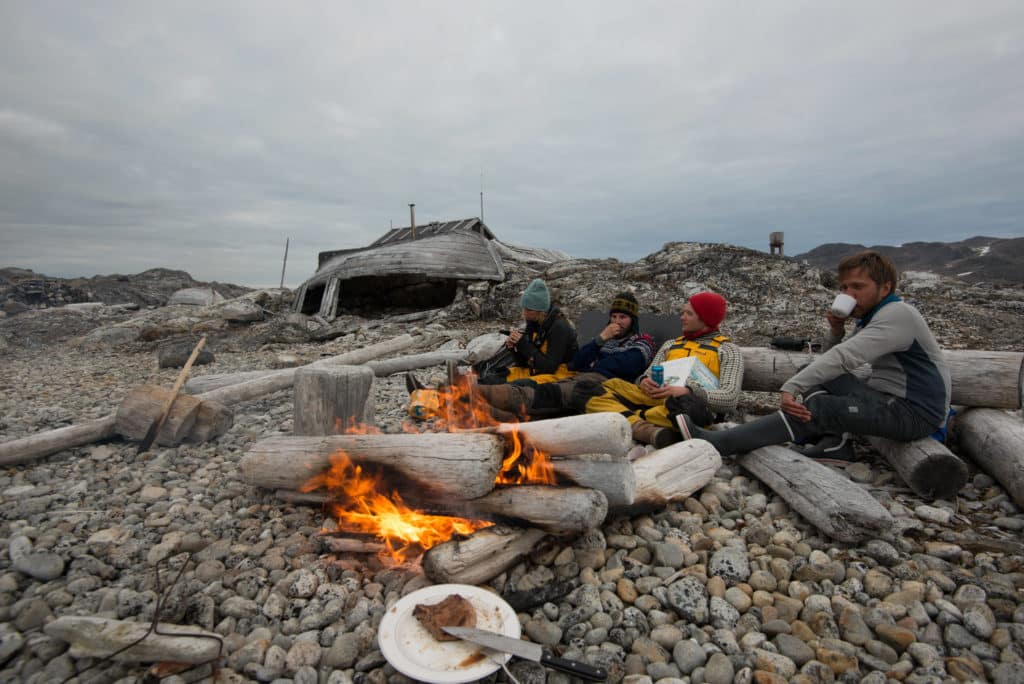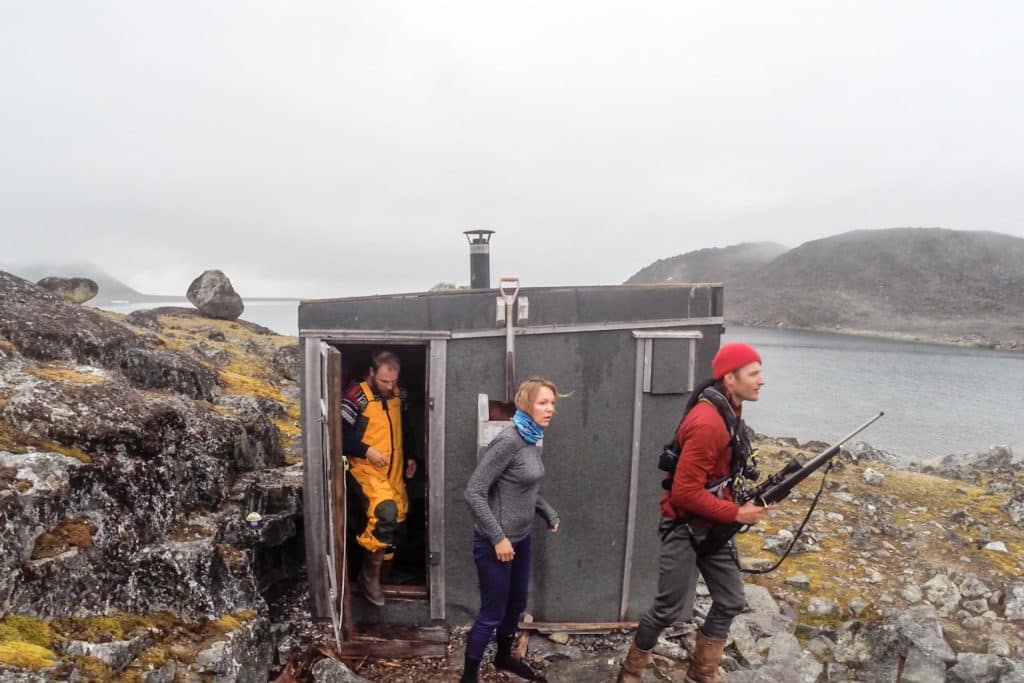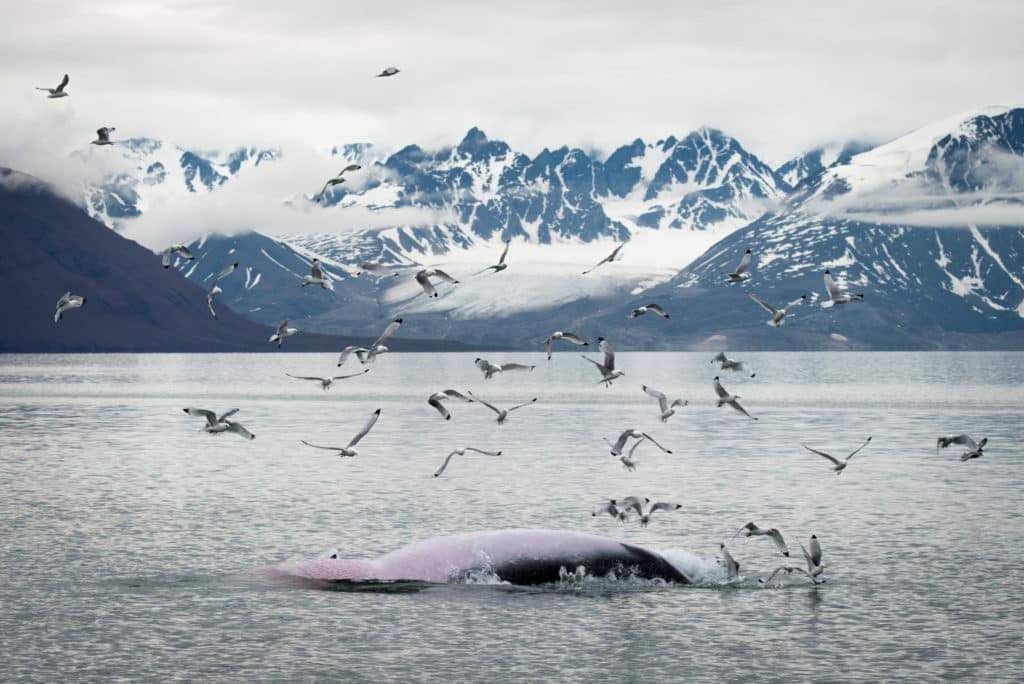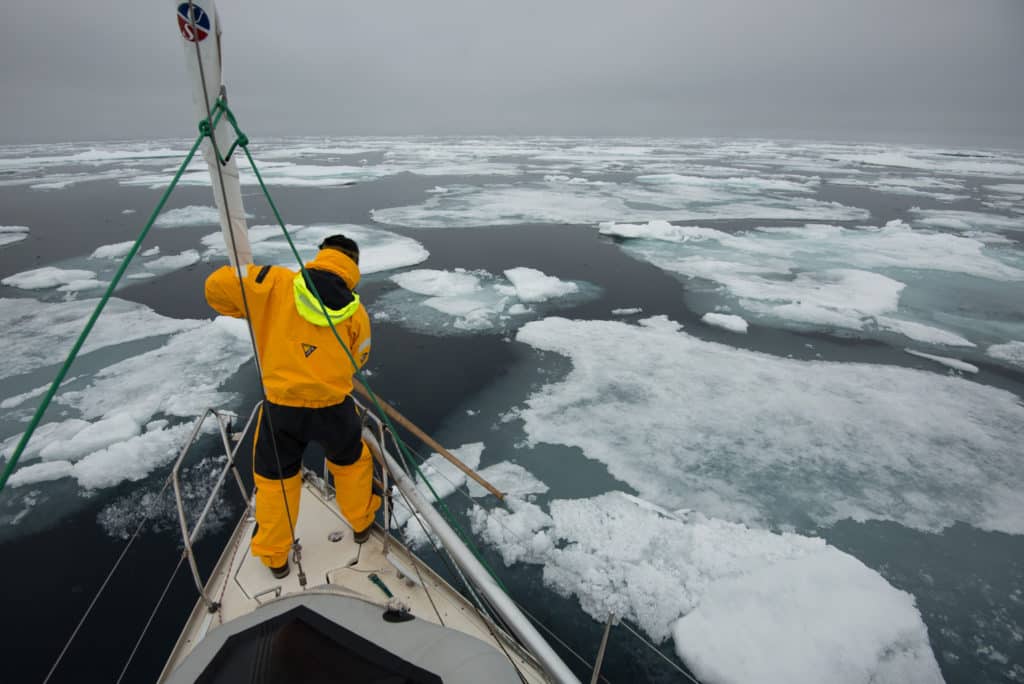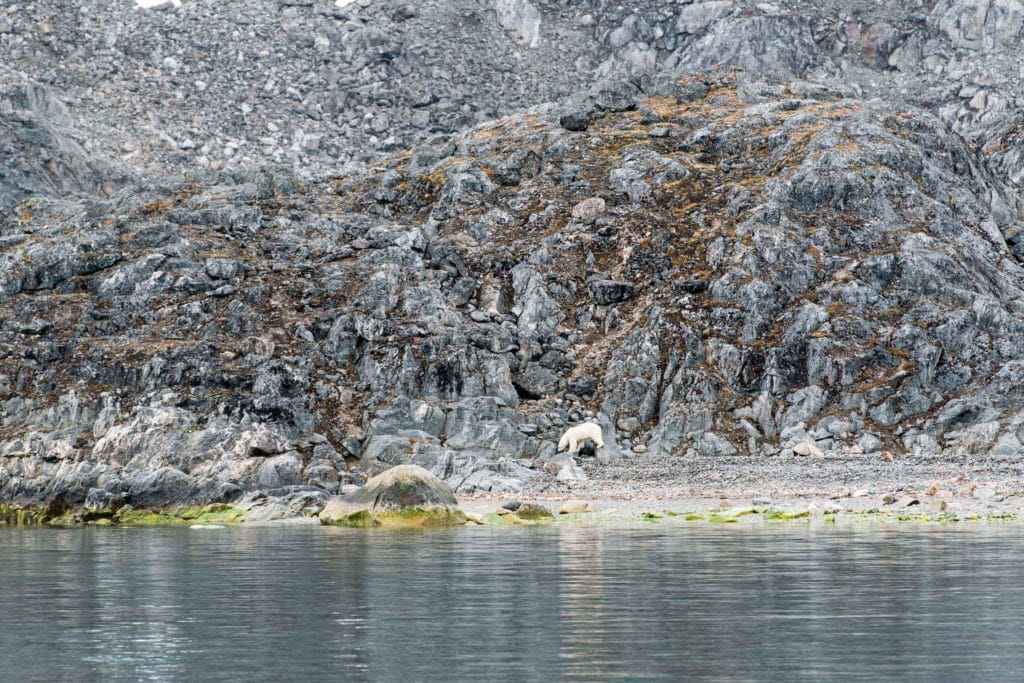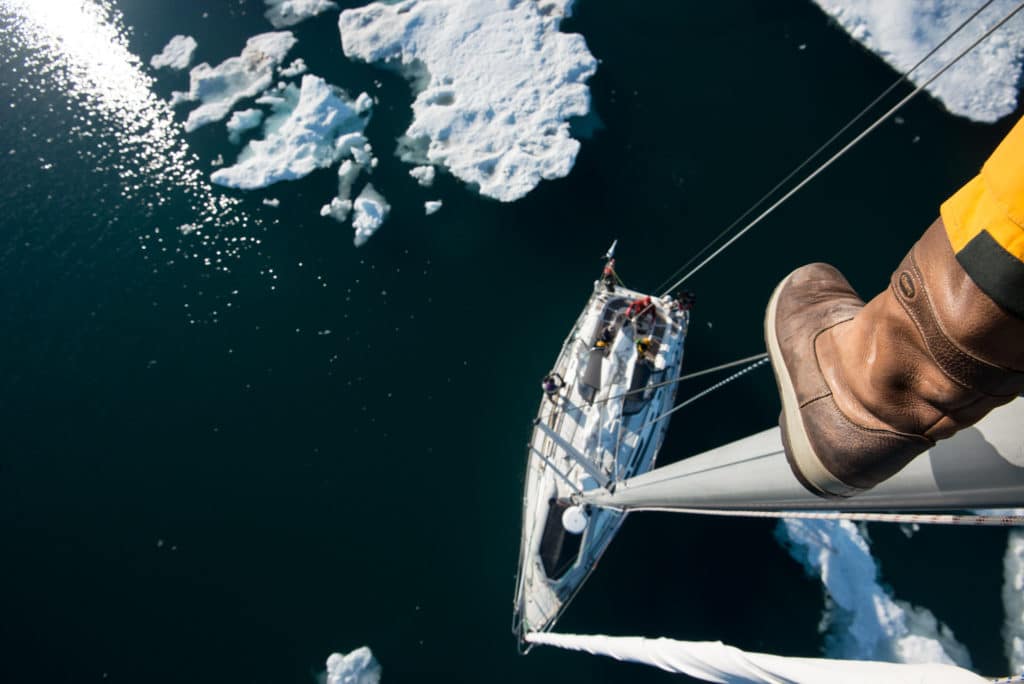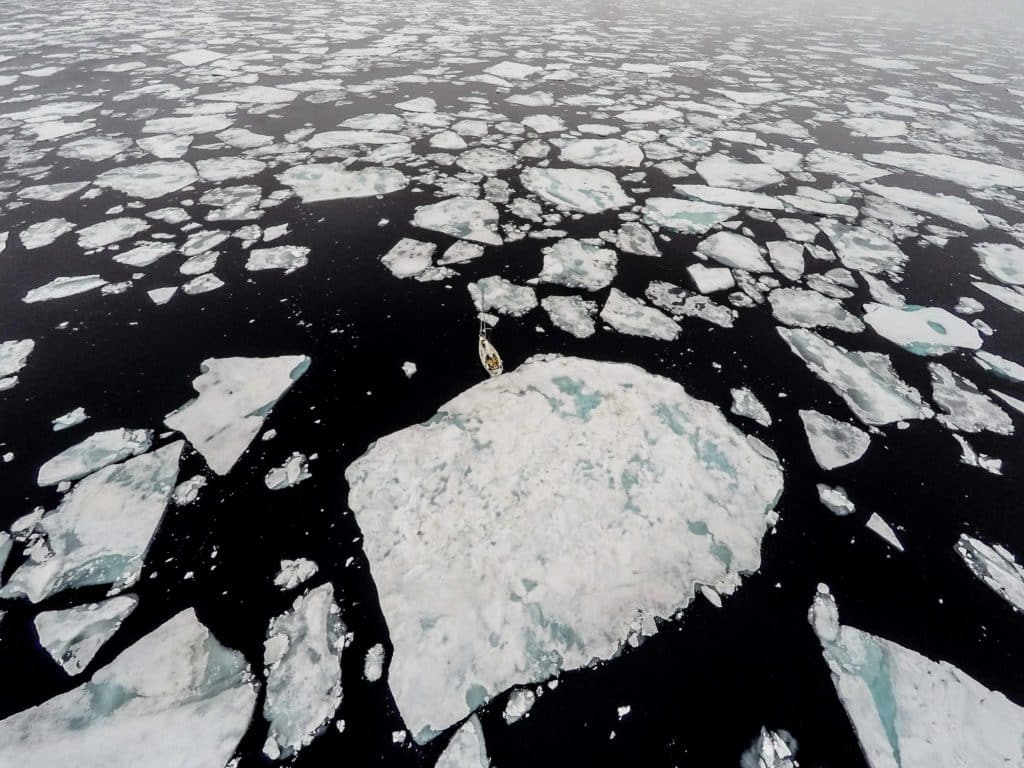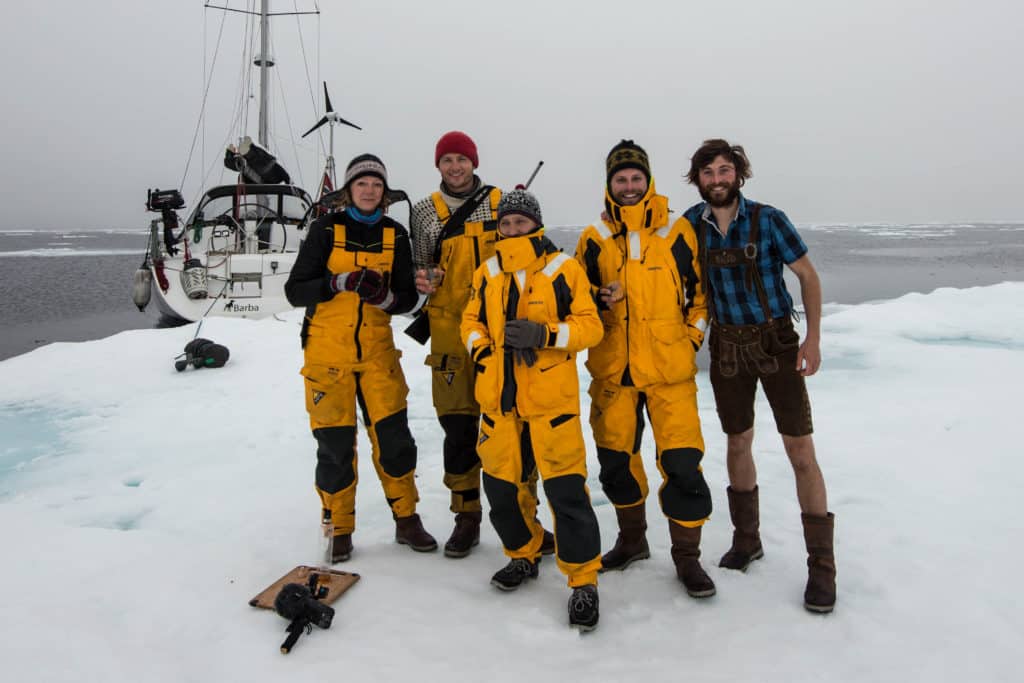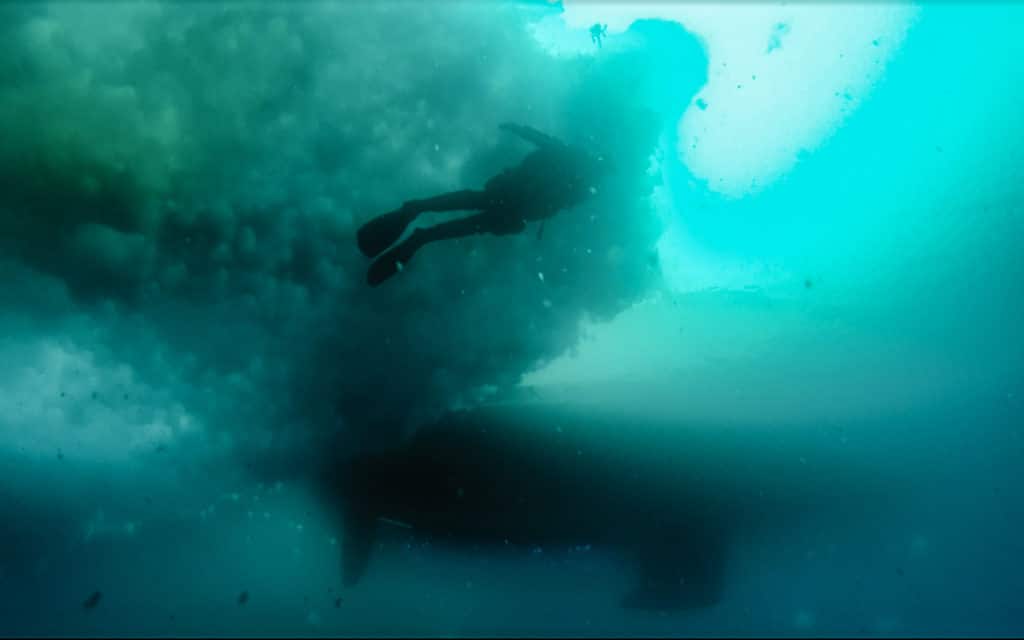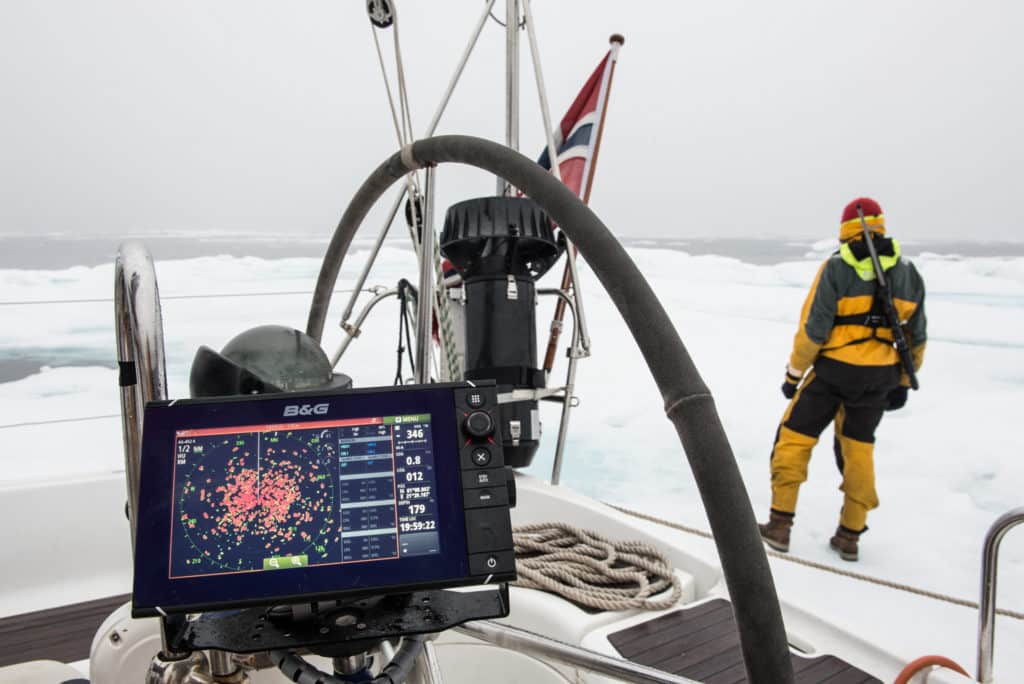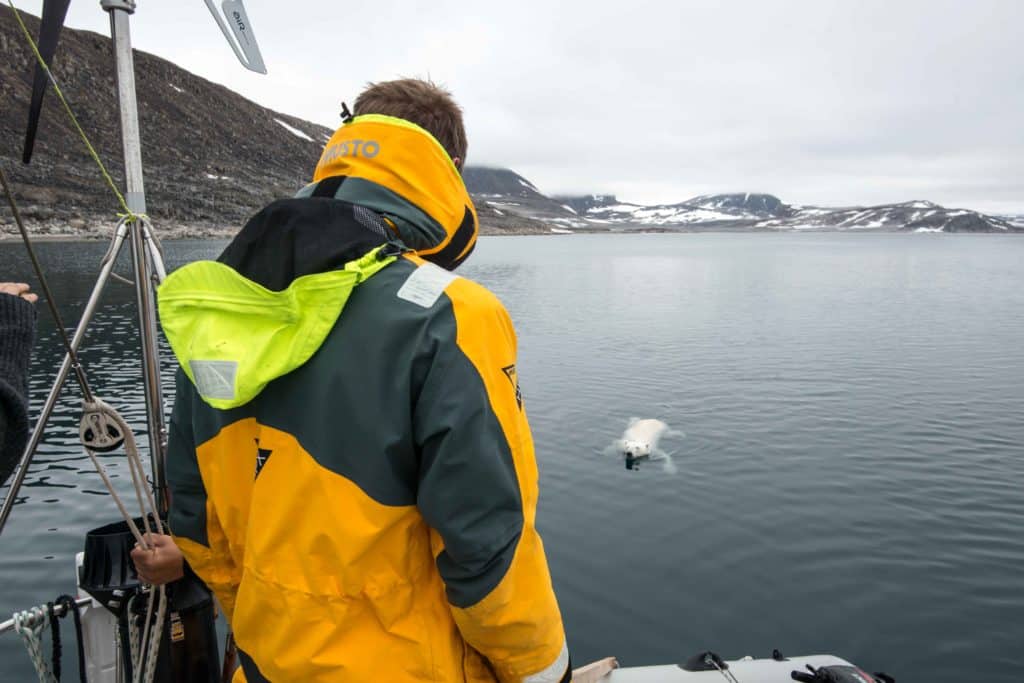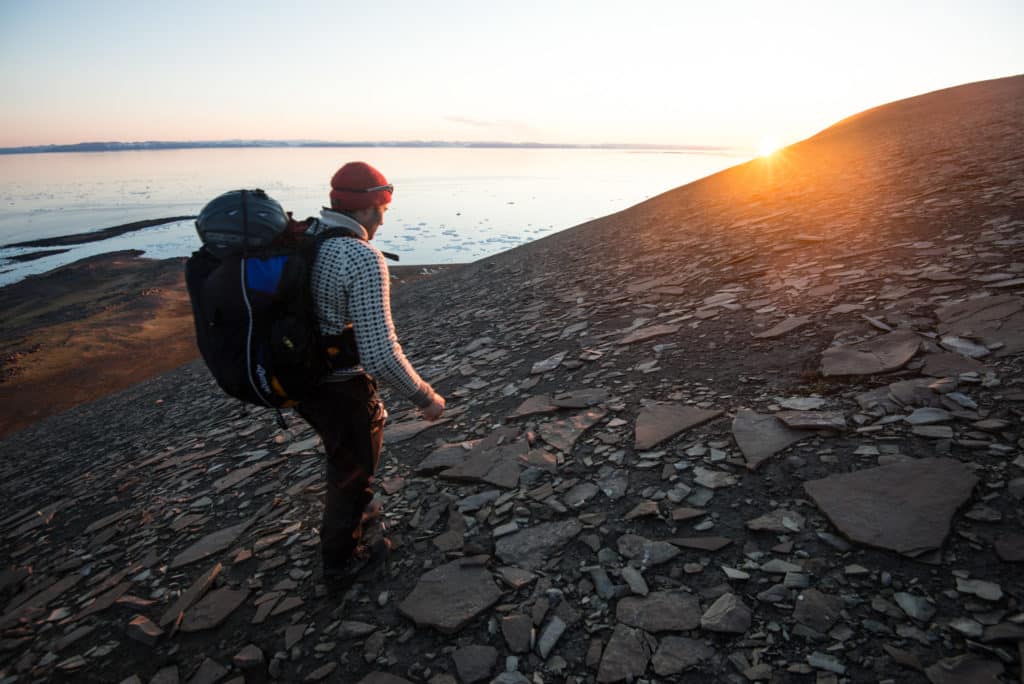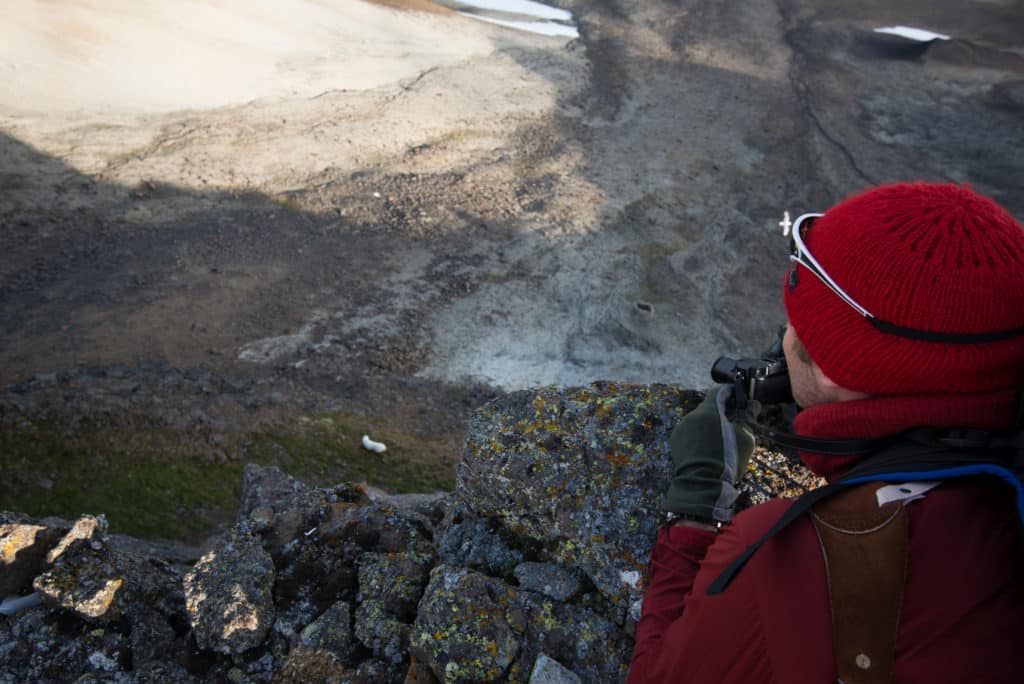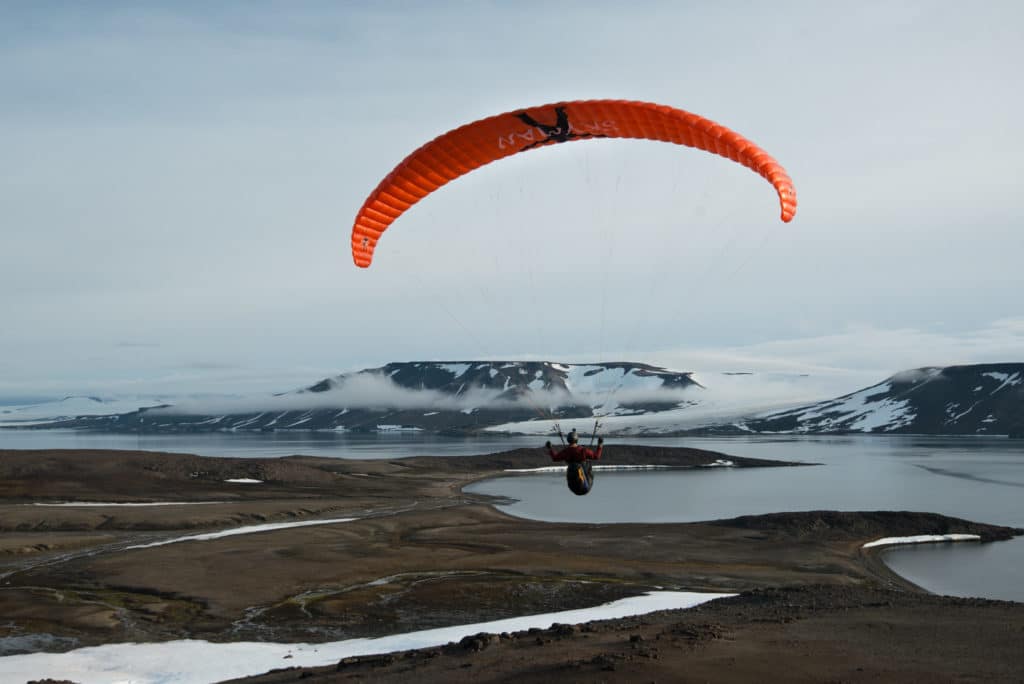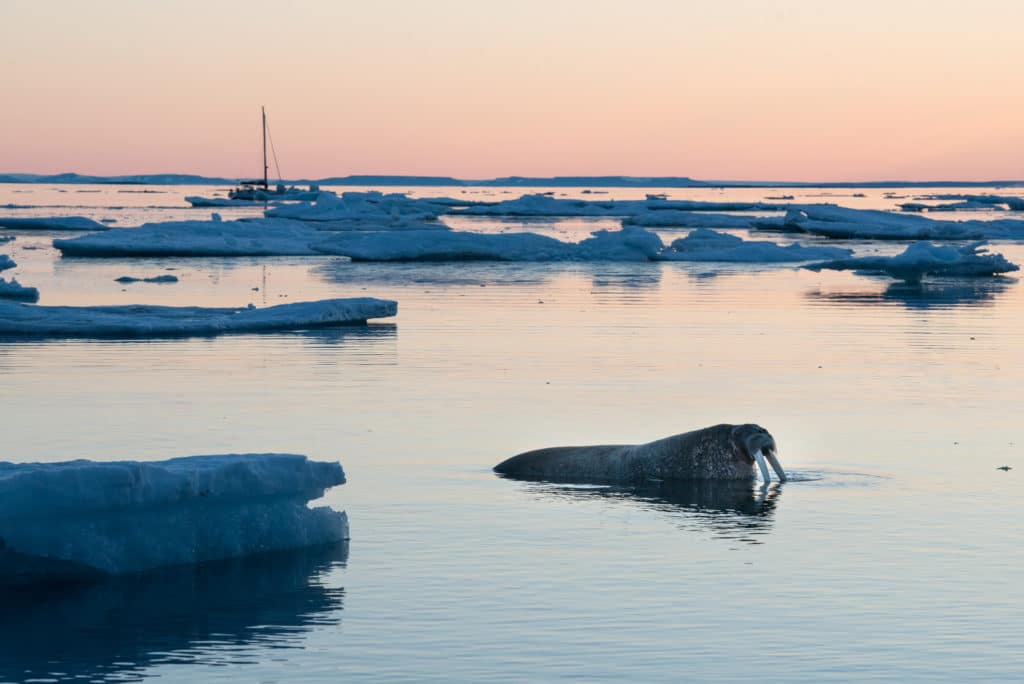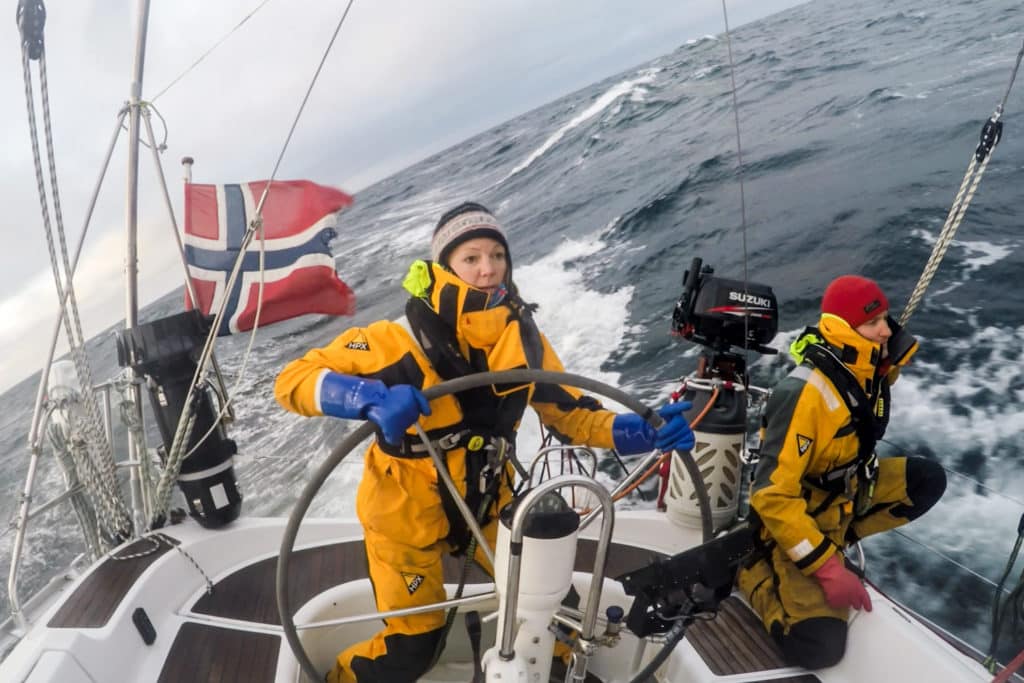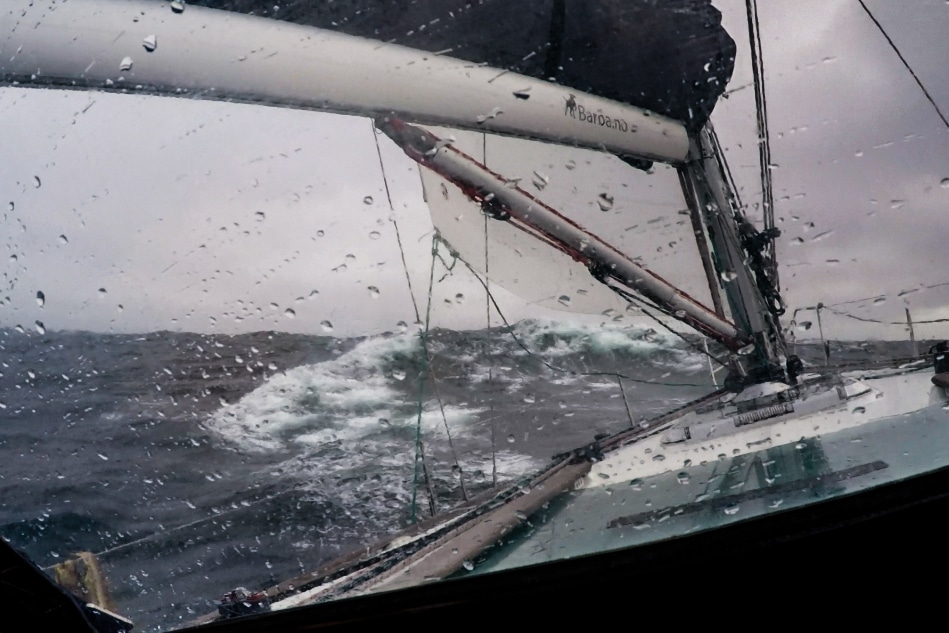It’s hard to believe it’s already behind us now. Summer, and our Arctic sailing expedition around Svalbard aboard Barba, have come and gone. We still have most of the spectacular Norwegian coast to sail our way back down in these golden days of autumn. But if there’s any indication that time has passed and our nearly four-month adventure to the High Arctic has reached its final phase, it’s this: the Aurora Borealis.
For nearly two months this summer we were sailing under the midnight sun along the Norwegian mainland and north to Svalbard. Daylight simply refused to disappear. But just last week south of Hammerfest, in skies that are finally black in the night, we caught sight of our first Northern Lights from the Barba deck.
We all popped up to watch the Aurora, of course, as the sails propelled us forward in perfect winds that have been quite elusive in these parts. And we turned off the navigation lights ever so briefly to bask in the darkness and all that glorious, shimmering green overhead.
We’d come a long way – over 2,600 nautical miles – and sailing around Svalbard was never an easy or overly comfortable ride. But, without a doubt, it was worth it.
When we left the comforts of our last Svalbard port in Ny-Ålesund in early August with a goal of circumnavigating, we were looking at roughly five weeks in the true Arctic wilderness that lies to the north and east in the archipelago. Alone with the reindeer, polar bears, Arctic foxes, walruses and countless sea birds, there would be no place to provision for diesel or food before we made it back to mainland Norway by early September. We’d be refilling our fresh water tanks from glacial streams along the way.
The convenience of mooring up on floating docks and piers that we’d so far enjoyed went out the window when we left Ny-Ålesund, too. We’d be anchoring up every night from here on out, we knew. And navigating Svalbard’s tricky conditions and anchorages proved to be one of the most challenging aspects of the trip as we ventured north along the west coast of Spitsbergen.
There were idyllic little natural harbors like Mushamna and Magdalenefjord, well-known among Svalbard sailors and popular stops on cruise ship itineraries, too, for their sheltered anchorages. And in those spots we slept soundly. But in many other places, we put out the anchor in 10 to 18 feet of water only to have winds and currents send us adrift, often just when we were starting to feel comfortable.
In Svalbard, nightly anchor watch became the norm. As did what we dubbed “Anchor TV,” as we’d sit in the Barba salon watching the anchor trace squiggly lines across the iPad screen, always threatening to break free. It’s a suitably exciting Arctic substitute for HBO. And on more than one occasion, when our hold unloosened from what had seemed to be a promising bottom, the crew were out there in their long underwear at some ungodly hour battling the elements to get things back under control. Most useful, if exhausting, was our improvised winch-up-the-mast technique to lift meter upon meter of anchor chain and an anchor loaded with kelp and battered by current that otherwise wouldn’t budge.
It was all part of the adventure in sailing around Svalbard – and the adventures never quit in this wild place.
We spotted our first polar bear one evening near the 17th century Dutch whaling harbor of Virgohamna. Three of the crew had decided to sleep in a trapper’s hut on land. And when the others went back to Barba (anchor watch!) after enjoying the cabin’s fireplace, they spotted the great white wanderer cruising the shoreline. By the time our captain dinghied back to the cabin to warn the rest of us, the bear had entered the water and was being tormented by splashing seals – there was no sea ice for the polar bear to hunt them on, and the seals made great theatrical getaway splashes as they taunted it
Cruising the coastline or heading ashore, we always kept the binoculars handy, looking for polar bears (Svalbard has the earth’s densest population of the majestic animals). But the bears never materialized when we willed them to, only when we least expected it. Like the time Andreas and Daniel spotted a polar bear under a bird cliff high above a bay as they were getting ready to launch their paragliders off Wilhemøya. Or, even more up close and personal, early one morning in Brennevinsfjord when two of us went to lift the anchor to motor out only to be thwarted by a polar bear that was swimming straight for the boat. And what a wakeup call that was! We kept the feisty young male at bay with the ice-pushing sticks, but the revelation was real – these animals are serious swimmers, and more than capable of clambering onboard if we hadn’t been on guard.
Our most epic moment came after a break in the winds that gave us a window to push above 81 degrees North. Our goal was to reach the pack ice, the last frontier before the North Pole.
And when the pack ice finally appeared, it didn’t waste any time. We went from no ice around us to being in the thick of it, almost completely surrounded, in a matter of minutes. Still seeing our route out, we anchored up on an ice floe the size of a soccer field to take in the otherworldly surrounds. But it soon became apparent that the floes were moving in tighter still, clustering around us like puzzle pieces. And Barba’s fiberglass hull had us worried. So we scrambled midships and off the bow, hoisting our wooden pushing poles to spend a tense two hours pushing our way back out into the clear.
Then we found another ice floe to toss out the anchor atop and donned dry suits to go scuba diving under a floe. The water was 30 degrees F, but the chance to view the underside of the polar pack ice far outweighed the chill.
When it was time to leave the pack ice to sail back south, we weren’t ready to go. We had yet to see a polar bear hunting on the floes, or a fresh seal kill draining bloody rivers into water Caribbean blue. There was plenty to come back for someday, but the wind reports told us it was time to go.
Getting this far north and reaching the polar ice pack had been the pinnacle of our journey. We had worked our way up from Southern Norway in a boat designed more for the Mediterranean than an Arctic adventure, but Barba had been upgraded for the challenge with the best electronics to extend our range of operation. The radar had been most useful since we spent much time navigating in the fog. And we also had the chance to test the new Simrad forward-looking sonar since we spent much of our time in the north in uncharted waters. As opposed to traditional depth finders that tell you the depth under the boat, the sonar gave us the depth out to 60 meters in front of the boat. The technology let us navigate through uncharted waters at far greater speeds and with greater confidence than an ordinary depth finder would have allowed. And ultimately, all that preparedness not only made us safer but allowed us access to waters in Svalbard we would have otherwise avoided entirely.
When we’d first arrived in the archipelago, it was predicted that sailing either through the Hinlopen Strait or around the northeastern island of Nordaustlandet would not be possible this summer due to ice conditions. In the end, however, winds cleared things and the ice got pushed around to the southwest side of the archipelago.
We spent a few days on the South of Nordaustlandet, watching belugas cruise along the edge of Austfonna. One of the world’s largest ice caps, it gushes with waterfalls and is moving toward the sea at a rate 25 times faster than it did in 1995. Pulling out the gennaker to sail along the glacier’s crumbling face was an extraordinary moment.
From there we proceeded south through the Hinlopen Strait, as it was recommended as the most interesting option for circumnavigating. The major hurdle was the Heleysundet, which separates Spitzbergen and Barentsøya. The current through this channel runs at 11 knots, twice Barba’s cruising speed. And we spent a few exciting hours at the entrance, watching icebergs the size of houses crash through as we waited for the current to turn in our favor. As the tide started to shift, Barba slipped through what is known to be the most dangerous passage in Svalbard without any major concerns. We encountered the ice again to the south around the Freemansundet and at a beautiful anchorage at Kapp Lee. But south from there, conditions were largely ice free…even if it wasn’t exactly smooth sailing back to the Norwegian mainland.
We had strong head winds to Bjørnøya during a crossing of 36 hours that had everyone onboard quite uncomfortable (horizontal was the best place to be). Then gale force winds straight off the stern for the last 49 hours or so to Hammerfest gave us another rollicking ride. But we managed to stay under sail for almost the entire crossing from Svalbard, arriving back on the mainland with diesel to spare but hungry for every other creature comfort.
We’d left Svalbard at the very end of August, and just in time. Frost was creeping across the sprayhood, the mast was slick with ice and the wind gauge had even frozen into place atop it. And snow storms and more gale force winds were predicted just days after our departure.
This wild edge of the planet hadn’t been the easiest place to sail. And neither had spending over a month together, the five of us, living on a tiny floating island with polar bears often thwarting our plans to stretch our feet on shore. But the sense of accomplishment we felt at having achieved the goal we’d set out to reach was what any great sailing adventure is all about.
Many months before, from the comfort of our homes around the world, we had drawn out our proposed route on a map. We had traced our fingers along a line that curved from the top of Norway nearly to the top of the globe. Back then it was still a dream. But then comes the day when you actually pull up the ropes and do it. In the end, our 37-foot-long fiberglass sailboat had carried us to the edge of the world and back.
We were full of respect and wonder for having made it to this remote part of the world aboard Barba. She’d experienced the forces of Arctic nature first hand, and the rewards for her tired crew had been worth every step of the ride.
Follow along with the adventures of the Barba crew on their blog at barba.no.
To see more photos by Daniel Hug, including additoinal images from the arctic expedition, visit his website at www.terragraphy.de.
